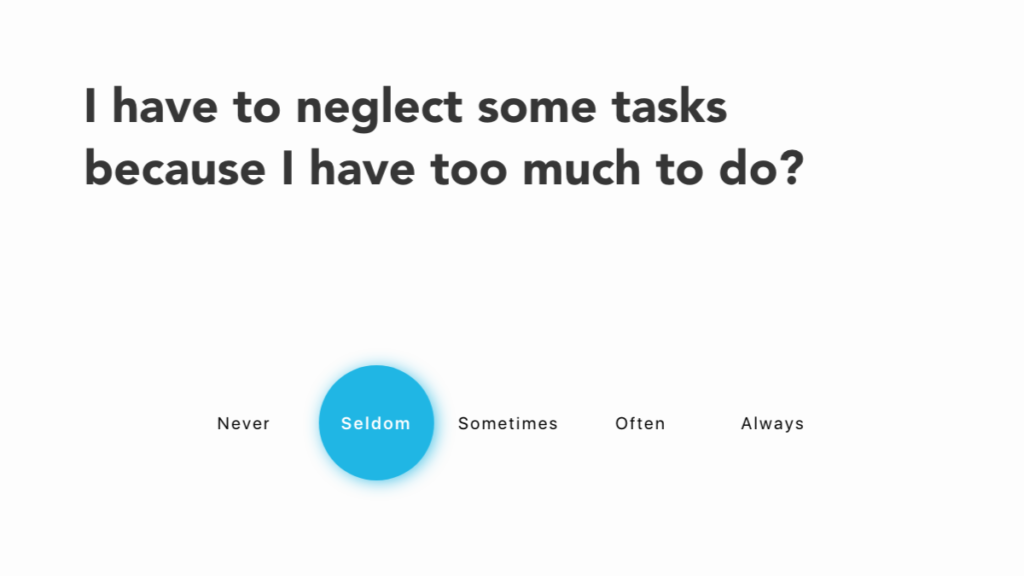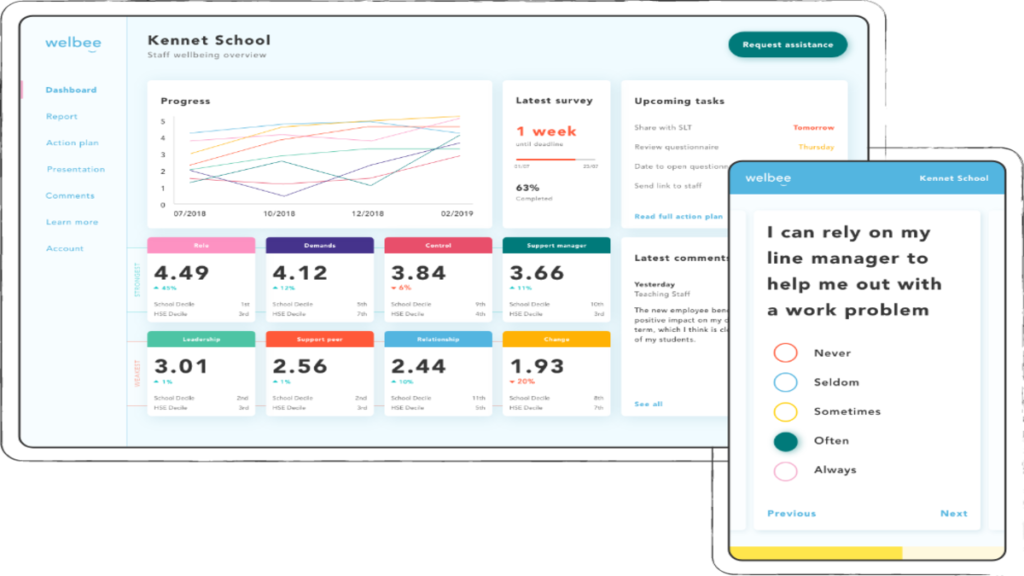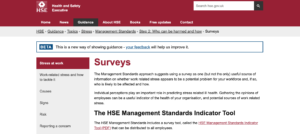
There are some good reasons why you might not want to run your own staff wellbeing survey. As the co-founder of a company that runs them for schools, I know you would expect me to say that.
However, I’d rather you did your own than not at all – it will at least shine a light on this important area.
Assuming you have made the decision to do it yourself, then these tips will help make sure you do it in the best way possible.
Choosing your staff wellbeing survey or questions.
You should not use surveys in isolation and you will already have data and information to help you better understand what may be happening with staff wellbeing in your school.
The number of leavers, staff absence levels, grievances, student outcome trends, and other data will already give you clues. It is important to review and use this and talk to staff to understand things from their perspective.
Adding a survey can be very useful in obtaining further feedback. Making this anonymous and covering all staff will provide further significant insight into what is going on in your school (assuming you do it well).
Which staff wellbeing survey should you use?
Use one that has an evidence base, is ideally independently evaluated and looks at the areas you are looking to address. There are not that many around that fulfil this criteria and looking at what your union recommends may also be helpful.
Many survey’s simply state they have been developed by psychologists, though they should really cite the evidence behind them too.
For me there still remains only one winner – the Health and Safety Executive’s (HSE) Indicator Tool. It is freely available to use and addresses those areas that make for a good working environment.
The questions are based on evidence linking work design to staff wellbeing outcomes. It has been designed to provide a broad indication of how well staff rate their leaders and organisations performance in managing the risks associated with work related stress and wellbeing. You can also access benchmarks, though these are cross sector, rather than schools.
You can add this to an on-line survey tool such as survey monkey to make distribution and collection of results easier.
Obtaining high staff participation for your staff wellbeing survey
Obtaining a high response rate is important to ensure your results correctly reflect the situation in your school.
As a crude rule of thumb for a survey of this type, a response rate of over 50% could be considered adequate; over 60% desirable, over 70% good and more than 80% very good. When we work with schools, we always aim to achieve a minimum of 80%.
With a response rate of less than 50%, the data should be considered as indicative only, and treated with extreme caution.
There are several things you can do to encourage a good response rate before you start your survey. Not least is that staff should feel it is important, that their views matter and that they will be listened to and acted on. Steps you can take include:
- Publicising the survey; including supportive comments from senior management and staff/union representatives, where appropriate, and encouraging people to take part before it is distributed.
- Explaining to all staff: the purpose of the survey; why they should take part – what’s in it for them; how and when they will be receiving a link to the survey and can undertake it; how and when they will get feedback on results (at least at a summary level); and how actions will be taken to address findings.
- Ensuring anonymity of responses. This will encourage staff to give frank and honest feedback. A formal statement of anonymity at the beginning of the survey is the best way to do this. You should also reinforce this when writing to and talking with staff.
- Ensure line managers understand that the process is important and that they encourage their staff to take time to complete the survey.
- Giving people enough time to complete the survey (at least 10 / 15 minutes). Ideally allow staff to complete the survey in work time, where possible, rather than expecting them to complete it in their own time. We know that this provides much better response rates.
- Continuing to publicise the survey throughout the process.
- Providing a contact person or persons for staff questions and support.
Example message to promote your staff wellbeing survey to staff
Below is an example message you can swipe or adapt to share with staff. You will have your own words and context and this just may help given how busy you will be. Just click below to open the message.
Suggested message to staff (click to open)
Dear [Colleague / Name],
[School Name] is committed to protecting your health, safety and welfare and that of all staff and we acknowledge the importance of wellbeing and tackling the causes of stress in our workplace.
We would like your support in undertaking a survey, which is designed to find out how you feel about various aspects of your working conditions. We are asking you and your colleagues to do this to be sure that we are doing all we can to make this the best place for you to work. The survey is anonymous and the questions asked do not allow for any individual to be identified.
You will receive an invitation, with a link to allow you to take the survey on-line and please complete it as soon as you can (or enter details of when you are making time for them to take it in work) and before (enter date). When the survey responses have been collated, summary results will be shared with you, and we will reach agreement on appropriate action.
Please take the time to complete the survey. It will provide an indication of how well we are performing and of where there may be opportunities for improvement. Don’t rely on others to raise issues, as wellbeing and stress is subjective and can affect people in different ways.
The survey should take no more than 10 minutes to complete. For each question click on the answer that most accurately reflects how you feel. There is also the opportunity for you to share comments about what you think is going well and how we might improve.
If you have any questions, please contact [enter contact name / email / phone number]. Thank you for participating.
You will also want to support this through meetings, briefings and asking line managers to encourage their team members to take part..
Before launching your survey
It is important to plot the survey process. Plan when and how findings will be fed back to staff and how you will engage with them in agreeing actions moving forward. Don’t wait until you have the results as you may end up feeding back too late and in a piecemeal way.
An effective plan that you stick to will help to ensure improving staff wellbeing is delivered coherently and becomes part of what you do each day, rather than a series of activities that address symptoms rather than causes.
It also makes it more likely that staff will continue to engage in solutions and participate in future surveys.
Your results
This is likely to be the hardest part for any school running their own survey.
Collating the feedback into aggregate results will take time, though with the right tool should be relatively straightforward.
Analysing what the results mean is likely to be the most challenging and time consuming element of running your own survey and needs care.
When using any survey with a Likert scale there is a tendency to generalise results. For example, if a score is out of 5, scoring below 3 is seen as a concern, above 3 OK and close to or above 4 is good.
Yet all scores may not be equal – scores for support, understanding roles, and relationships are likely to be significantly higher than those for staff demands and control. So scoring 4 in one area may not be a particularly good score, whereas 3 in another area could be.
While using the HSEs benchmarks will give some guidance, they are cross sector and schools do tend to perform better and worse in different areas (as a whole sector).
You will also need to work out what the feedback is telling you and what specific actions you should take. Do this alongside your staff and not to them. While as leaders you have a disproportionate influence on the wellbeing of your staff through how you lead and the decisions you make, it is everyone’s business.
You can ask staff for further insights behind the scores and work with them to identify those actions that are likely to have the greatest impact for them and your school.
Setting goals and creating your plan
You will want to identify and recognise progress and so you should set specific goals (use SMART ideas).
This gives a focus for engagement and action. Work out how you will deliver each goal and make these actions simply part of your school development or improvement plan. You can then report on progress as you do for other activities and without adding further workload.
Finally celebrate successes and authentically and effectively remind people of the changes and improvements that have been made – be explicit. Staff are busy and have short memories and part of your role is to make sure they understand and share the journey with you.
Could we help?
Following the steps set out will give you the best chance of a successful survey experience and make it more likely you will focus on the right actions and improve staff wellbeing.
There is a lot to do and making sure you analyse results well is the most difficult step. It will also take those doing this away from their usual day job. If you would like some help with this then you may be surprised how affordable it is and the level of analysis and support you receive, including recommended actions.
For £247 – £647 + VAT (price range for smaller to very large schools) we will do all this for you. The only part you will need to do is to position it well with your staff.
The results will be analysed and delivered into your own on-line dashboard.

This include
- Filters to identify specific groups within your school to better target action
- A school benchmark (as well as the HSE one)
- Recommended actions to make it easy to move forward quickly
- The collection of staff comments and ability to anonymously respond to them for further insight or for reassurance
- A PowerPoint of results to make sharing with staff easy…and more.
You can also try it risk free with our full money back guarantee for first time users.
You can find out everything that is included on our home page here or you can get in touch to ask questions or schedule a call by contacting us here.

